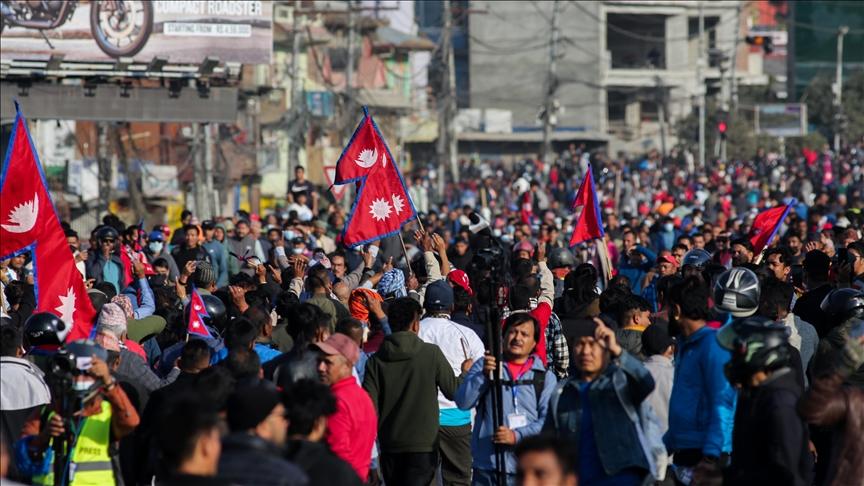
📌 How It All Started: The Social Media Ban
On September 4, the Nepalese government abruptly blocked 26 major social media platforms — including Facebook, X (formerly Twitter), YouTube, Reddit, Signal, and Snapchat — citing non-compliance with new registration requirements. Officials argued the ban was needed to fight misinformation, cybercrime, and fake accounts.
But for young Nepalis, the move was the last straw. Already frustrated by corruption scandals, nepotism, and the flaunting of wealth by political families — a trend nicknamed “Nepo kid” online — many saw the shutdown as blatant censorship and a direct attack on freedom of expression.
🧑🤝🧑 The Movement: Gen Z Leads the Charge
By September 8, Kathmandu’s streets were filled with tens of thousands of protesters. The movement, largely decentralized and without a formal leader, drew students, activists, and ordinary citizens alike. Demonstrators gathered at key sites such as Maitighar Mandala and the Federal Parliament in New Baneshwor, chanting slogans like “Stop corruption, not social media.”
Security forces responded with tear gas, water cannons, rubber bullets, and eventually live ammunition. The clashes turned deadly — at least 19 protesters were killed and hundreds injured.
🏛️ Political Fallout: Government in Crisis
As violence spread, pressure on the government mounted. On September 9, Prime Minister Oli resigned, along with several cabinet ministers, including the Home Minister. The Nepal Army was deployed in Kathmandu and at Tribhuvan International Airport to restore order.
That same day, the government revoked the social media ban, with Communications Minister Prithvi Subba Gurung confirming platforms were operational again. But the reversal came too late — the protests had already evolved into a broader call for accountability and reform.
🔥 Escalation and Chaos
While the early demonstrations were largely peaceful, unrest soon escalated. Protesters set fire to government buildings, the parliament, and even politicians’ homes. Parts of Singha Durbar, Nepal’s central government complex, were torched, and the President’s residence at Sital Niwas came under attack.
In several districts, jails were stormed and prisoners freed. Reports from Kailali and Kaski described deadly confrontations between soldiers and inmates attempting mass escapes. Observers noted that some of the violence appeared to be driven by political groups and opportunistic actors, complicating the protest movement’s message.
⚖️ Human Rights Concerns
International organizations, including Human Rights Watch and Amnesty International, condemned the police response, calling the use of live ammunition excessive and unlawful. The UN High Commissioner for Human Rights demanded an independent investigation.
In response, the Nepalese government has promised a 15-day inquiry panel to investigate the violence and pledged compensation for families of the dead and injured. But many young protesters remain unconvinced, arguing that only systemic reforms can rebuild trust.
✨ Why Nepal’s Gen Z Took Action
The protests are more than just a reaction to censorship. They reflect deeper frustrations that have been simmering for years:
Digital Freedom: Social platforms are central to how young Nepalis connect, organize, and work. The ban felt like a direct assault on their daily lives.
Economic Struggles: Youth unemployment remains high, and many see little opportunity in Nepal’s current system.
Corruption & Elitism: The ostentatious lifestyles of politicians’ families have fueled resentment in a country where many survive on modest incomes.
Demand for Change: Protesters are calling not only for accountability but for structural reforms, transparency, and genuine youth representation in politics.
🔭 What’s Next for Nepal?
A military-backed interim government has been installed, but stability is far from guaranteed. Protest leaders and youth groups are demanding constitutional reform, anti-corruption trials, and early elections. Some voices have even raised the question of restoring the monarchy, though most protesters strongly oppose such a move.
Key issues to watch in the weeks ahead:
Will the inquiry panel hold police and officials accountable?
How quickly will new elections or reforms be implemented?
Will youth activists gain real seats at the political table?
How will Nepal balance digital regulation with freedom of expression going forward?
✅ Final Word
Nepal’s Gen Z uprising is more than a reaction to a social media ban — it is a demand for a new political order. What began as outrage over digital freedom has transformed into a nationwide push for transparency, fairness, and accountability.
For young people across the globe, Nepal’s protests offer a powerful reminder: in the digital age, youth movements can spark dramatic political change — and governments that underestimate them do so at their peril.

Leave a comment
Your email address will not be published. Required fields are marked *